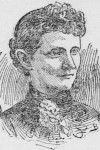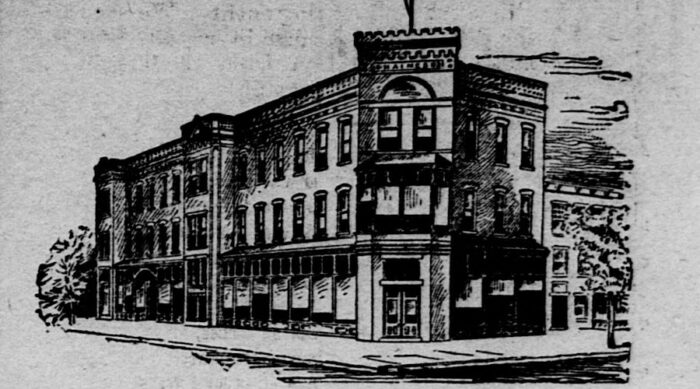
Last year, as a Labor Day rerun, I posted an article on Coxey’s Army and how he and his workers were welcomed here on Capitol Hill. Today, I turn to someone who would appear to have been the natural enemy of the workers: a department store owner. Yet it appears that she did try to help the workers of the day, including members of Coxey’s Army.
Elizabeth A. Morrison was born in 1849 in St. Clairsville, Ohio. She attended Ohio Wesleyan College, then married Mahlon Haines, and they had three children together. The last one was born just a few weeks before Mahlon, during a buying trip in Philadelphia, died accidentally.
Haines continued her husband’s business, but after two years, decided that she would rather her children were educated in DC. She fell sick herself after wrapping up her store and spent two years recovering. At this point, she was persuaded to open her own store, and acting quickly, she started a new shop in Anacostia.
Although it started slowly, her business soon grew to the point of her being able to move to a larger building, this time on Capitol Hill. Her new shop, in the 1200 block of 11th Street SE, became so large it forced her to expand. Her first expansion was simply into the next-door house. However, by 1891, she needed a purpose-built building. She found a plot of land on the corner of 8th and Pennsylvania Avenue SE, and work commenced there in early 1892. Six months later, “Haines’ Washington Store” opened. It was an impressive achievement, with 15,000 square feet of trading space on two floors, plus a third floor that was rented out by the day. Under one roof were 50 different departments carrying a vast array of goods. An article published four years later described it as “a store with all the modern conveniences, where trading becomes a pleasure instead of a vexation.”

Vexatious was only the economy. In early 1893, a series of bankruptcies and bank runs caused a severe depression, whose effects were felt all over the United States, and the economy did not recover until 1897. In spite of this, Haines persevered, and her store survived, even when a fire burned much of the store in 1905. Haines also gave money to causes she believed in, including posting bail for several of the leaders of Coxey’s Army. She also lived her beliefs, instituting a profit-sharing plan within her store. Once she had received a “moderate amount of profits,” the remainder was distributed among the heads of departments. The Washington Evening Star that reported this progressive policy did not indicate whether these excess profits then were passed down to the actual workers.
Haines and her family moved form 11th Street to Seward Square, living a little less than a block east of J. Edgar Hoover, who was living there with his family.
In 1910, Haines decided to sell her store. It was bought by Milton Ney and Joseph Goldenberg, who sold off most of the stock in a major “reorganization sale” and then, having renamed it the “Haines’ Department Store” continued to run it for many more years.
